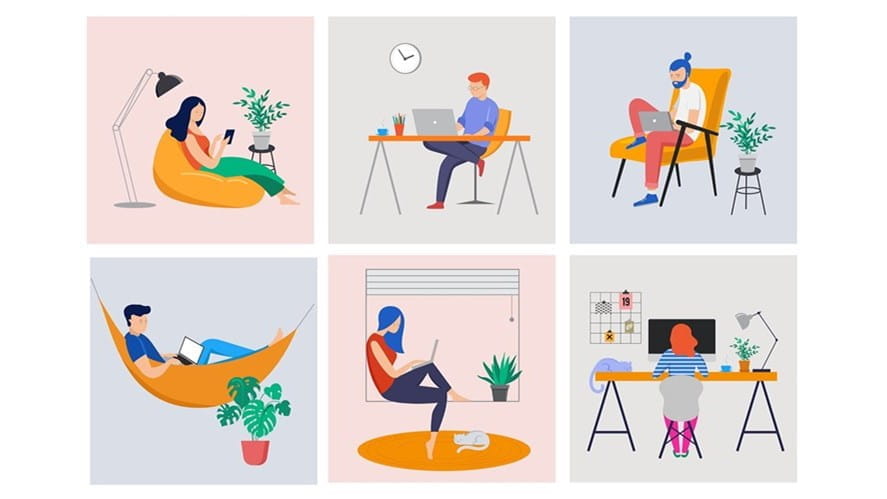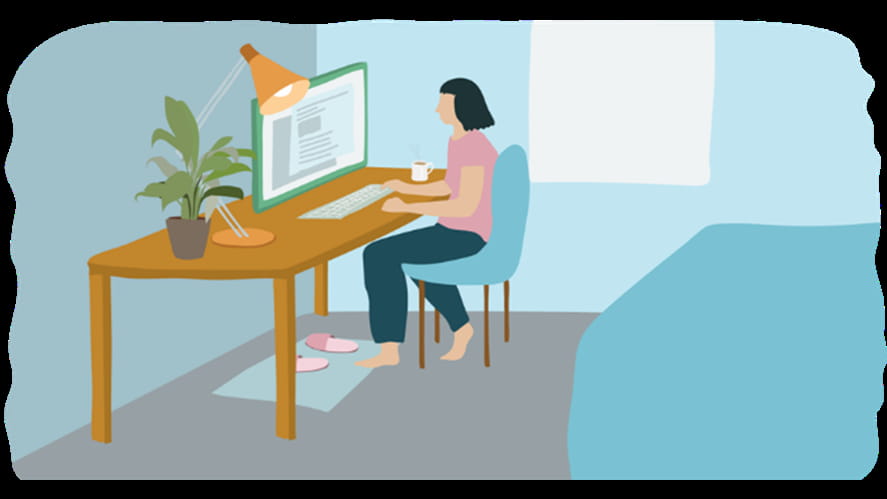
As remote work and distance learning has become our way of life, we want to make sure that you are looking after yourself and your posture.
There is nothing like the comforts of your home, except during the pandemic. Across the world, the new work-from-home and distance learning routines amid the COVID-19 outbreak have many people – and their strained necks, backs and eyes – wishing they could trade those home comforts for the comforts of the school and office.
Here are a few simple steps that could help:
1. Stay away from the sofa - otherwise you will be straining your neck and back looking down at your screen.

2. Select that right spot to sit – your home office needs to be a place where you can focus and sit comfortably without straining your neck, wrists or back.
3. Lighting – make sure that the brightest light source is at the side of you. Not in front as this will cause your eyes to strain. If the light source is behind you, it will cause a glare or shadow on your computer screen.

4. Your chair - if possible, it should be one that supports your spinal curve. If you have a wooden chair that has no lumbar support, consider investing in a back support cushion, and if not find a pillow or rolled up towel that supports your lower back.
5. The height of the chair is also important – the height of the chair should be such that your feet can rest flat on the floor. You can use a box/books or something else from home to rest your feet on if needed. The way to find out if your chair is the right height is to look at your thighs. They should be parallel to the floor, with your knees at right angles.

6. Armrests – your arms should be resting comfortably, in a position that allows your shoulders to be relaxed.
7. When using a laptop - if possible, switch to using a separate keyboard and mouse. This will allow your arms to stay close to your body, with your elbows near your side and wrists straight.
Then try lifting your laptop onto a box or some books so that you are looking forwards to your screen, rather than downwards.

8. Exercise ball – try sitting on one for a break from the traditional chair. The idea is that the instability of an exercise ball requires the user to increase trunk muscle activation, which then increases core strength, improves posture and decrease comfort.

9. Myofascialrelease techniques with tennis ball – studies have found that this is an effective technique to treat pain, fibromyalgia, increase blood flow, improve range of motion, speed up muscle recovery, alleviate chronic lower back pain, improve sleep, reduce anxiety and depression, and quality of life.


10. Take a break! It is so important to take a break whilst working, ideally every 25-30 minutes if possible. Try to stand up for breaks, phone calls or other non-computer tasks. Move often by changing positions and walking when possible.

Hopefully by following these ergonomic tips, you can make remote working a lot easier on your body.
Kelly Walker, School Nurse